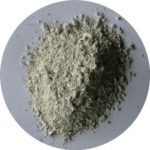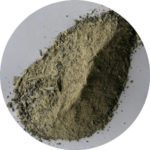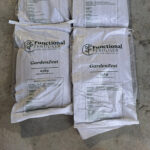PW Burton
Last month’s article headed, ‘The rules have changed’, started with, ‘the European Union has just refused to grant Monsanto a new license for Glyphosate’.
On the 29th June in the UK’s Guardian there was an article headed, Controversial chemical in Roundup weedkiller escapes immediate ban, followed by, Glyphosate, key ingredient in Monsanto’s bestselling herbicide, has its European licence extended for 18 months despite warnings from the International Agency for Research on Cancer (IARC) it is ‘probably carcinogenic’.
Further digging through articles in ‘The Guardian’ revealed that the European Commission had submitted to the demands of various countries’ regulatory agencies for a continuance, despite it being revealed that countries such as Germany had actually had their papers written by representatives of agrichemical companies, citing ‘lack of resources’ to do the work by the regulators themselves.
Eighteen months is long enough for the merits and potential dangers of Glyphosate to hopefully be robustly debated. There will be those that will wring their hands and stridently demand that its use must cease immediately, and there will be those that sigh deeply and believe that it signals that common sense has prevailed, and all is well with current farming systems.
Change is coming, of that we can be certain; it’s the only constant in life, and perhaps we’re already well into a far reaching change period; only time will tell.
Safe and high quality food
What is accepted is that the buying public world-wide are increasingly demanding, and are prepared to pay extra, for ‘safe’ food, particularly for their children, and these folk must be New Zealand’s future market if we are to also prosper.
Ian Proudfoot the Global Head of Agribusiness, KPMG has recently written that the World Economic Forum at its annual meeting in Davos in January suggested that the world has entered its fourth industrial revolution: the digital-physical fusion revolution. He claims that we’re in an era of, revolutions in medical science, breakthroughs in nanotechnology, and the fusion of digital, biological and physical technologies.
He also states that, “there is a detectable complacency across the NZ primary sector, a reluctance to face up to global changes in the agrifood system” with the likely consequence that our customers will not continue to pay premiums for our products. Could it be we’ve already reached that point?
Because change is unsettling, change that rocks the foundations only takes place out of necessity. Our current lamb and dairy prices, it could be argued, already place us in that situation.
A recent newspaper article made the point that, for products to receive the best possible returns, they must be of the highest quality, and that starts at the farm.
It’s all in the soil
The quality of anything produced from pasture is dependent on the quality of the soil. Soil quality is not a focus of current science or farm practices and, until it is, we will continue to produce stuff suitable only for commodity markets, and remain price takers waiting hopefully for an upturn at the next auction.
Improvements at ground level can be made easily and almost seamlessly. Changes in soil fertility inputs, in conjunction with shifts in management based on the understanding of sound grazing practices, have meant cash surpluses are currently being generated by a growing number of farmers.
By embracing systems that provide all the required major and minor elements, as well as stimulating natural soil processes, these growers and farmers are producing up to 30% more than conventional operators.
With increasing yields comes a lift in quality. It happens naturally as plants photosynthesise more efficiently, due to increased root depth in soils containing a steady supply of moisture and rapidly cycling nutrient.
When soils are in optimum health, pastures and crops handle weather fluctuations more easily. Pest and disease pressure reduces noticeably and animal performance lifts, with fewer animals required to maintain production levels.
The cost of these programmes is no greater, and often significantly less, depending on the amount of fertiliser nitrogen that is presently being used. As has been proved by those using Functional Fertiliser products and programmes over fifteen years of continuous use, the risk is minimal.
For more information call Peter on 0800 843 809.




